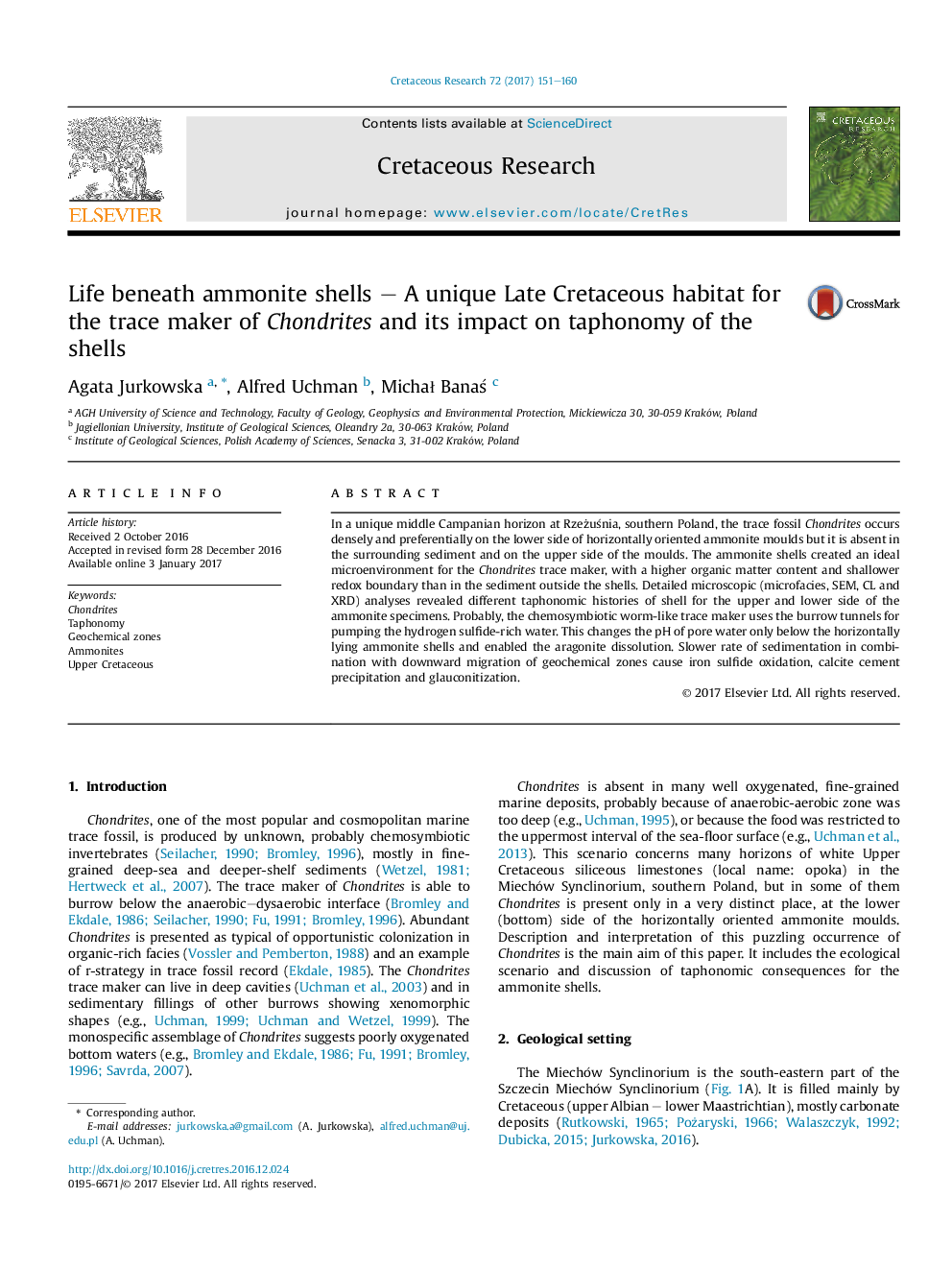| Article ID | Journal | Published Year | Pages | File Type |
|---|---|---|---|---|
| 5788074 | Cretaceous Research | 2017 | 10 Pages |
Abstract
In a unique middle Campanian horizon at RzeżuÅnia, southern Poland, the trace fossil Chondrites occurs densely and preferentially on the lower side of horizontally oriented ammonite moulds but it is absent in the surrounding sediment and on the upper side of the moulds. The ammonite shells created an ideal microenvironment for the Chondrites trace maker, with a higher organic matter content and shallower redox boundary than in the sediment outside the shells. Detailed microscopic (microfacies, SEM, CL and XRD) analyses revealed different taphonomic histories of shell for the upper and lower side of the ammonite specimens. Probably, the chemosymbiotic worm-like trace maker uses the burrow tunnels for pumping the hydrogen sulfide-rich water. This changes the pH of pore water only below the horizontally lying ammonite shells and enabled the aragonite dissolution. Slower rate of sedimentation in combination with downward migration of geochemical zones cause iron sulfide oxidation, calcite cement precipitation and glauconitization.
Related Topics
Physical Sciences and Engineering
Earth and Planetary Sciences
Palaeontology
Authors
Agata Jurkowska, Alfred Uchman, MichaÅ BanaÅ,
